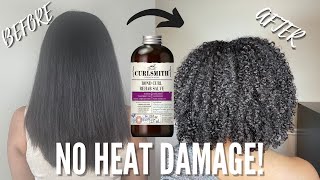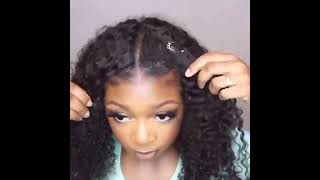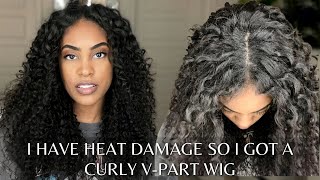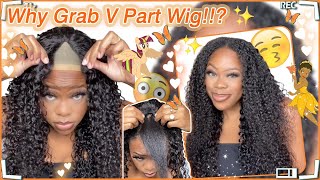DEBUNKED:4 Common Myths and Misconceptions About Heat Damage

Natural, relaxed, and transitioning women are all on very different hair journeys but one thing we all have in common? A fear of heat damage. We love versatility, and going from curly to straight would be nice from time to time, but we know that heat damage is one of those things that can stop our healthy hair journeys right in their tracks and send us back to square one.
Over the years, we’ve learned what to do and what not to do when dealing with heat but just like everything else, we’ve received some information and advice that can actually be working against us. We’ve heard everything from “heat damage can be repaired and reversed” to “it’s okay if you lose your natural curl pattern”, and it’s time to debunk some of those myths!
Below are 4 common myths and misconceptions about head damage–debunked!
You’ll Only Damage Your Hair If You Apply Heat Frequently
A lot of women are under the impression that your hair only experiences damage when you frequently apply heat. The truth is, depending on your hair type, both flat ironing or blow drying your hair just one time and applying heat weekly can actually have the same adverse effects on your kinks and curls.
There are multiple factors that determine why your hair reacts the way it does to heat; porosity, hair type and texture, what products you use, how you apply heat and what temperature you use are just as important as how often you use heat.
For an example, a woman with thick, normal porosity hair may be able to straighten her hair twice a month on a medium heat and still retain healthy hair while a woman with high porosity 3C hair may experience damage after one low-heat straightening session.
The bottom line is, you need to understand your hair and know what you can and cannot do in order to avoid split ends, dryness, curl pattern loss, and all other things that come with heat damage.
Heat Training isn’t the same as heat damage
The conversation about whether heat training is damaging or not has been a controversial one. If you’re unfamiliar with the term, heat training is the regular application of heat in order to loosen your curl pattern. For the most part, heat training is used to make hair more manageable or to combat shrinkage.
Many say that it shouldn’t be categorized as “heat damage”, but in actuality, it is the result of protein bonds in the hair being permanently altered to the point that your hair can never return to it’s natural state–and that is exactly what heat damage is.
Yes, heat training may very well loosen your curl pattern and create the look that you were going for, but that exact change in your hair also serves as a precursor to a more serious form of heat damage. If you continue to regularly apply heat after your curl pattern has changed, you may find yourself dealing with another set of problems soon after.
 Heat damage is always noticeable
Heat damage is always noticeable
Damaged hair shows itself in many ways and sometimes, you will notice major changes like a different curl pattern or split ends happen after using heat. However, most cases of heat damage aren’t that extreme so it is quite easy for heat to be overlooked as the culprit for your hair issues.
For an example, you may be dealing with dry, brittle, and frizzy hair but you can attribute all of those problems to a number of things–like not keeping your hair properly hydrated or still using shampoos that have sulfates. Because of this, you may be treating your hair for a problem that you don’t even have.
If you notice a change in your hair, go over your hair regimen and routine to see what you have been doing that may be detrimental to your hair health. Watch out for dryness, frizz, brittleness, and stringy hair ends because they are common–yet overlooked–signs of heat damage.
You can reverse heat damage
You have to treat heat damage like you have relaxed hair and you are planning to go natural: cut it off or begin transitioning. Heat damage can stress your hair to the point that it’s almost impossible to maintain a decent looking hairstyle so a lot of women choose to cut it off.
However, if you’d like to transition from it, you’ll need to wear protective and low manipulation hairstyles until your hair grows to a length you are comfortable with.
You know that heat damaged cannot be reversed but if you only have minimal damage, you can definitely blend it with the parts of your hair that are still curly. Twist and braid outs, buns, and bantu knots are just a few of the hairstyles you can use to flawlessly blend your healthy and damaged hair together.




